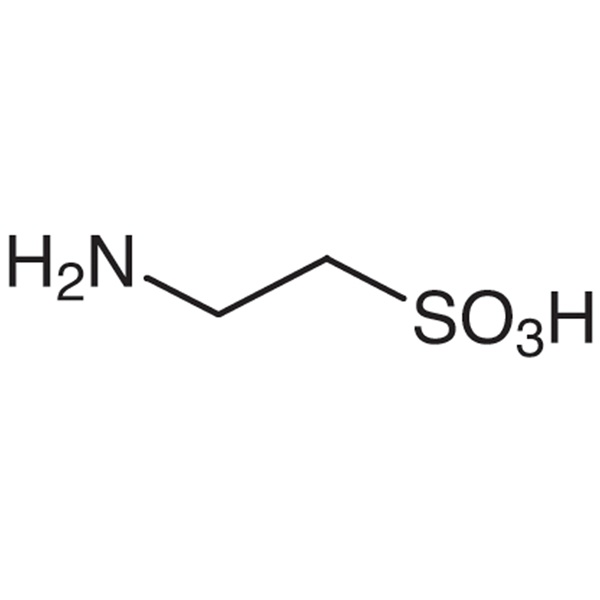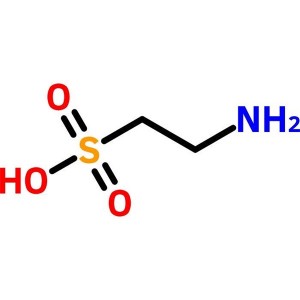Taurine CAS 107-35-7 Assay 99.0~101.0% Factory High Quality
Shanghai Ruifu Chemical Co., Ltd. is one of the leading manufacturers and suppliers of Taurine (CAS: 107-35-7) with high quality, production capacity 30000 tons per year. Taurine has been sold at home and abroad, praised by our customers. We can provide worldwide delivery, small and bulk quantities available, strong after-sale service. Welcome to order. Please contact: alvin@ruifuchem.com
| Chemical Name | Taurine |
| Synonyms | 2-Aminoethanesulfonic Acid; 2-Aminoethylsulfonic Acid; β-Aminoethylsulfonic Acid; 2-Amino-Ethanesulfonic Acid; |
| CAS Number | 107-35-7 |
| CAT Number | RF-PI1699 |
| Stock Status | In Stock, Production Scale Up to Tons |
| Molecular Formula | C2H7NO3S |
| Molecular Weight | 125.15 |
| Melting Point | >300℃ (lit.) |
| Density | 1.00 g/mL at 20℃ |
| Solubility | Soluble in Water. Practically Insoluble in Ethanol (99.5) |
| Brand | Ruifu Chemical |
| Hazard Codes | Xi | RTECS | WX0175000 |
| Risk Statements | 36/37/38 | TSCA | Yes |
| Safety Statements | 26-36-24/25 | HS Code | 2921199090 |
| WGK Germany | 2 |
| Item | Specifications |
| Appearance | White Crystals or Crystalline Powder |
| Identification (IR) | Concordant with the Reference Spectrum |
| Assay | 99.0~101.0 % (Anhydrous) |
| Loss on Drying | <0.20% (at 105℃ for 3 hours) |
| Residue on Ignition | <0.10% |
| Clarity and Color of Solution | Clear and Colorless (1.0 g of Taurine in 20 mL of Water) |
| Heavy Metals (as Pb) | <10ppm |
| Arsenic (As2O3) | <2ppm |
| Iron (Fe) | <10ppm |
| Chloride (as Cl) | <0.01% |
| Sulphate (as SO4) | <0.01% |
| Ammonium Salt (as NH4) | <0.02% |
| pH | 4.1~5.6 |
| Easily Carbonized | Matter Colorless |
| Total Plate Count | <1000cfu/g |
| Yeasts and Molds | <100cfu/g |
| E.Coli | Negative |
| Salmonella | Negative/25g |
| Staphylococcus Aureus | Negative/g |
| Shelf Life | 24 Months if Stored Properly and in its Original Packaging |
| Test Standard | JP17 / USP41 /GB14759 Standard |
Taurine (CAS: 107-35-7) JP Test Method
Taurine, when dried, contains not less than 99.0% and not more than 101.0% of C2H7NO3S.
Description Taurine occurs as colorless or white crystals, or a white crystalline powder.
It is soluble in water, and practically insoluble in ethanol (99.5).
The pH of a solution prepared by dissolving 1.0 g of Taurine in 20 mL of freshly boiled and cooled water is between 4.1 and 5.6.
Identification Determine the infrared absorption spectrum of Taurine as directed in the potassium bromide disk method under Infrared Spectrophotometry <2.25>, and compare the spectrum with the Reference Spectrum: both spectra exhibit similar intensities of absorption at the same wave numbers.
Purity (1) Clarity and color of solution-A solution obtained by dissolving 1.0 g of Taurine in 20 mL of water is clear and colorless.
(2) Chloride <1.03>-Perform the test with 1.0 g of Taurine. Prepare the control solution with 0.30 mL of 0.01mol/L hydrochloric acid VS (not more than 0.011%).
(3) Sulfate <1.14>-Perform the test with 2.0 g of Taurine. Prepare the control solution with 0.40 mL of 0.005 mol/L sulfuric acid VS (not more than 0.010%).
(4) Ammonium <1.02>-Perform the test with 0.25 g of Taurine. Prepare the control solution with 5.0 mL of Standard Ammonium Solution (not more than 0.02%).
(5) Heavy metals <1.07>-Proceed with 2.0 g of Taurine according to Method 1, and perform the test. Prepare the control solution with 2.0 mL of Standard Lead Solution (not more than 10 ppm).
(6) Iron <1.10>-Prepare the test solution with 2.0 g of Taurine according to Method 1, and perform the test according to Method A. Prepare the control solution with 2.0 mL of Standard Iron Solution (not more than 10 ppm).
(7) Related substances-Dissolve 1.0 g of Taurine in 50 mL of water, and use this solution as the sample solution. Pipet 1 mL of the sample solution, and add water to make exactly 50 mL. Pipet 1 mL of this solution, add water to make exactly 10 mL, and use this solution as the standard solution. Perform the test with these solutions as directed under Thin-layer Chromatography <2.03>. Spot 5mL each of the sample solution and standard solution on a plate of silica gel for thin-layer chromatography. Develop the plate with a mixture of water, ethanol (99.5), 1-butanol and acetic acid (100) (150:150:100:1) to a distance of about 10 cm, and air-dry the plate. Spray evenly ninhydrin-butanol TS on the plate, and heat at 105℃ for 5 minutes: the spot other than the principle spot with the sample solution is not more than one spot, and it is not more intense than the spot with the standard solution.
Loss on drying <2.41> Not more than 0.20% (1 g, 105℃, 2 hours).
Residue on ignition <2.44>Not more than 0.1% (1 g).
Assay Weigh accurately about 0.2 g of Taurine, previously dried, dissolve in 50 mL of water, add 5 mL of formaldehyde solution, and titrate<2.50>with 0.1 mol/L sodium hydroxide VS (potentiometric titration). Perform a blank determination in the same manner, and make any necessary correction.
Each mL of 0.1 mol/L sodium hydroxide VS =12.52 mg of C2H7NO3S
Containers and storageContainers-Well-closed containers.
Taurine (CAS: 107-35-7) USP Test Method
DEFINITION
Taurine contains NLT 98.5% and NMT 101.5% of taurine (C2H7NO3S), calculated on the dried basis.
IDENTIFICATION
• A. INFRARED ABSORPTION <197K>
ASSAY
• NITROGEN DETERMINATION, Method II <461>
Analysis: Proceed as directed in the chapter. Each mL of 0.01 N sulfuric acid is equivalent to 1.25 mg of C2H7NO3S.
Acceptance criteria: 98.5%-101.5% on the dried basis
IMPURITIES
• RESIDUE ON IGNITION <281>: NMT 0.3%
• CHLORIDE AND SULFATE, Chloride <221>
Standard: 0.50 mL of 0.020 N hydrochloric acid
Sample: 0.7 g of Taurine
Acceptance criteria: NMT 0.05%
• CHLORIDE AND SULFATE, Sulfate <221>
Standard: 0.25 mL of 0.020 N sulfuric acid
Sample: 0.8 g of Taurine
Acceptance criteria: NMT 0.03%
• IRON <241>: NMT 30 ppm
• HEAVY METALS, Method I <231>: NMT 15 ppm
• RELATED COMPOUNDS
Standard solution: 0.05 mg/mL of USP Taurine RS in water an equivalent concentration of about 0.5% of the Sample solution
Sample solution: 10 mg/mL of Taurine in water
Chromatographic system
(See Chromatography <621>, Thin-Layer Chromatography.)
Mode: TLC
Adsorbent: 0.25-mm layer of chromatographic silica gel mixture
Application volume: 5 µL
Developing solvent system: Butyl alcohol, glacial acetic acid, and water (3:1:1)
Spray reagent: 2 mg/mL of ninhydrin in a mixture of butyl alcohol and 2 N acetic acid (95:5)
Analysis: Dry the plate at 80° for 30 min. Spray the plate with Spray reagent, and heat at 80° for about 10 min. Examine the plate under white light. [NOTE-The RF value for the taurine spots should be about 0.2.]
Acceptance criteria: No secondary spot of the Sample solution is larger or more intense than the principal spot of the Standard solution.
Individual impurities: NMT 0.5%
SPECIFIC TESTS
• LOSS ON DRYING <731>: Dry a sample at 105° for 3 h: it loses NMT 0.3% of its weight.
ADDITIONAL REQUIREMENTS
• PACKAGING AND STORAGE: Preserve in well-closed containers.
• USP REFERENCE STANDARDS <11>
USP Taurine RS

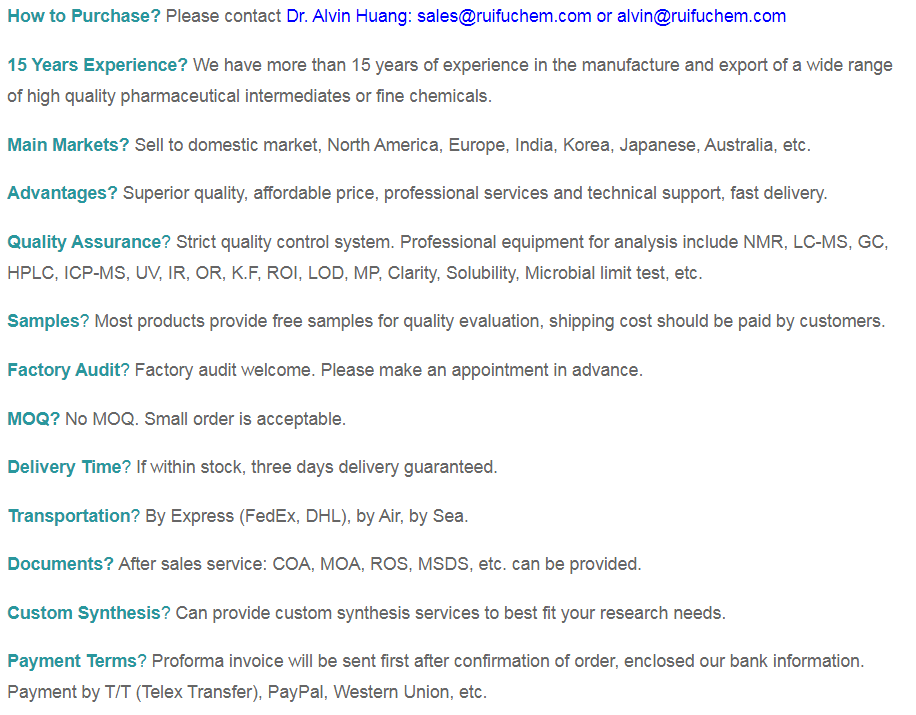
Taurine (CAS: 107-35-7), the first separation from the bezoar, so named. Taurine chemical stability, insoluble in ether and other organic solvents, is a sulfur-containing non-protein amino acids, in the body to the free state, do not participate in the body protein Biosynthesis. Taurine, although not involved in protein synthesis, but it is with cystine, cysteine metabolism is closely related. Human synthesis of taurine cysteine sulfite carboxylase (CSAD) activity is low, mainly rely on ingestion of food taurine to meet the needs of the body.
Taurine Applications:
1. In Food industry: Taurine can be used as food additives, nutritional supplements in food such as in dairy products, beverages, milk formula, baby formula, milk powder, and bean products and compound condiments. Taurine can accelerate the differentiation and development of nerve cell, enhance immunocompetence . This kind of Taurineproduct has fairly good healthcare functions and is suitable for different age group. As food nutritious supplement it can be added aptly in milk and milk powder. It is used as an ingredient in numerous energy drinks.
2. In Beverage: Taurine can be used as nutritional supplements in beverages such as tea.
3. In Pharmaceutical industry: Taurine can be used as Antihypertensive drugs, hypoglycemic drugs, cardiac drugs in pharmaceuticals. Taurine has anti-inflammatory, antipyretic, analgesic, sedative, hypotensive, hypoglycemic, antiarrhythmic, antibacterial, antiplatelet aggregation, enhancing immune function, cholagogic, strong liver, detoxification, regulation of vascular tension and other effects. It has a variety of clinical uses: it can be used in the treatment of acute and chronic hepatitis, fatty liver, cholecystitis, bronchitis, tonsillitis, acute conjunctivitis, etc Herpetic and viral conjunctivitis; It is also used in the treatment of cold, fever, epilepsy, infantile spasm, heart failure, arrhythmia, hypertension, uterine bleeding, arteriosclerosis, acne and so on. Taurine has been widely used as a medicine in China and Japan.
4. In Health and Personal care: Taurine can be used in cosmetic and personal care products such as in skin care products.
5. In Agriculture/Animal Feed/Poultry: Taurine can be used as a nutritional supplement in Agriculture/Animal Feed/Poultry feed such as in cat food. Taurine is an essential amino acid for human and animals. Taurine can be used as a feed additive in animal feed to prevent fish diseases and make the eyes of cats, dogs and other pets brighter.
6. Intermediate of organic synthesis.
Taurine (CAS: 107-35-7) Benefits:
1. Taurine could accelerate the growth of the nervous system;
2. Taurine plays an important role in the maintenance of normal vision;
3. Taurine could improve the immune system and help the growth of the body;
4. Taurine could accelerate the digestion of fat and plays a role in gall bile metabolization;
5. Taurine helps to maintain the brain function and accelerate & upgrowth the brain of baby and children;
6. Taurine plays a role in endocrine balance, and it could adjust and protect the body's cardiovascular system.
-
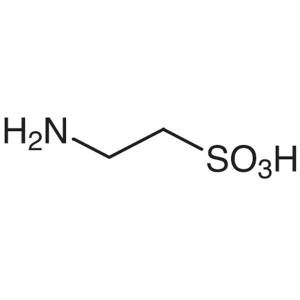
Taurine CAS 107-35-7 Assay 99.0~101.0% Factory ...
-
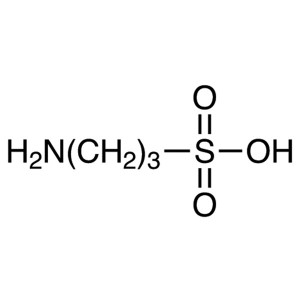
Homotaurine Tramiprosate CAS 3687-18-1 Purity >...
-
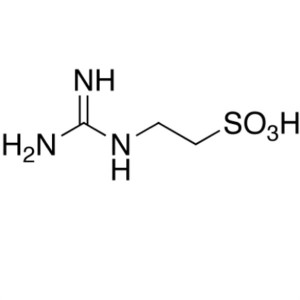
Guanidinoethyl Sulfonate, Taurocyamine CAS 543-...
-
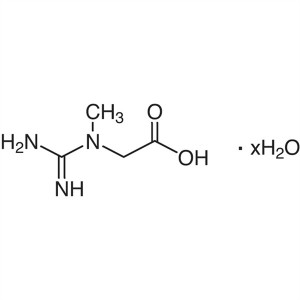
Creatine Monohydrate CAS 6020-87-7 Purity >99.5...
-
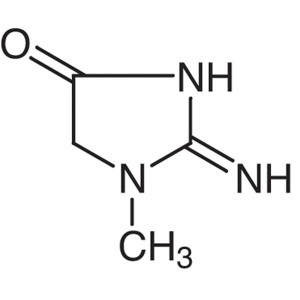
Creatinine CAS 60-27-5 Purity ≥99.0% (Titration...
-
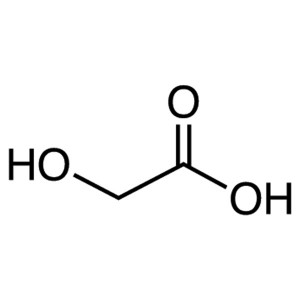
Glycolic Acid CAS 79-14-1 Purity >99.0% (T) Fac...
-
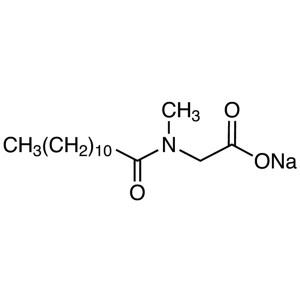
Sodium N-Lauroylsarcosinate CAS 137-16-6 Purity...
-
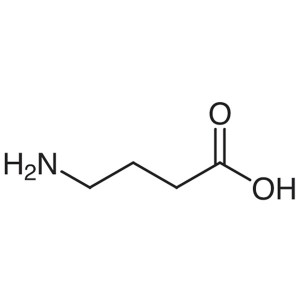
γ-Aminobutyric Acid (GABA) CAS 56-12-2 Assay 99...
-
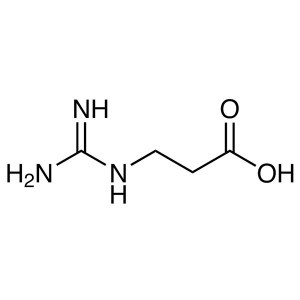
3-Guanidinopropanoic Acid CAS 353-09-3 Purity >...
-
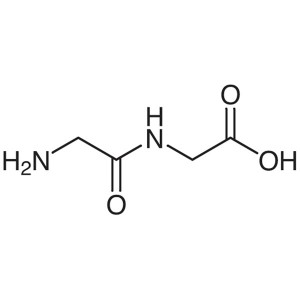
Glycylglycine CAS 556-50-3 (H-Gly-Gly-OH) Assay...
-
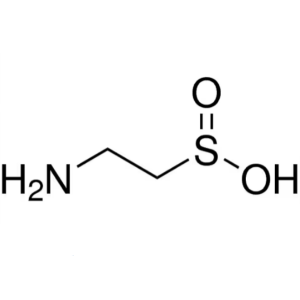
Hypotaurine CAS 300-84-5 Purity ≥98.0% (TLC)

